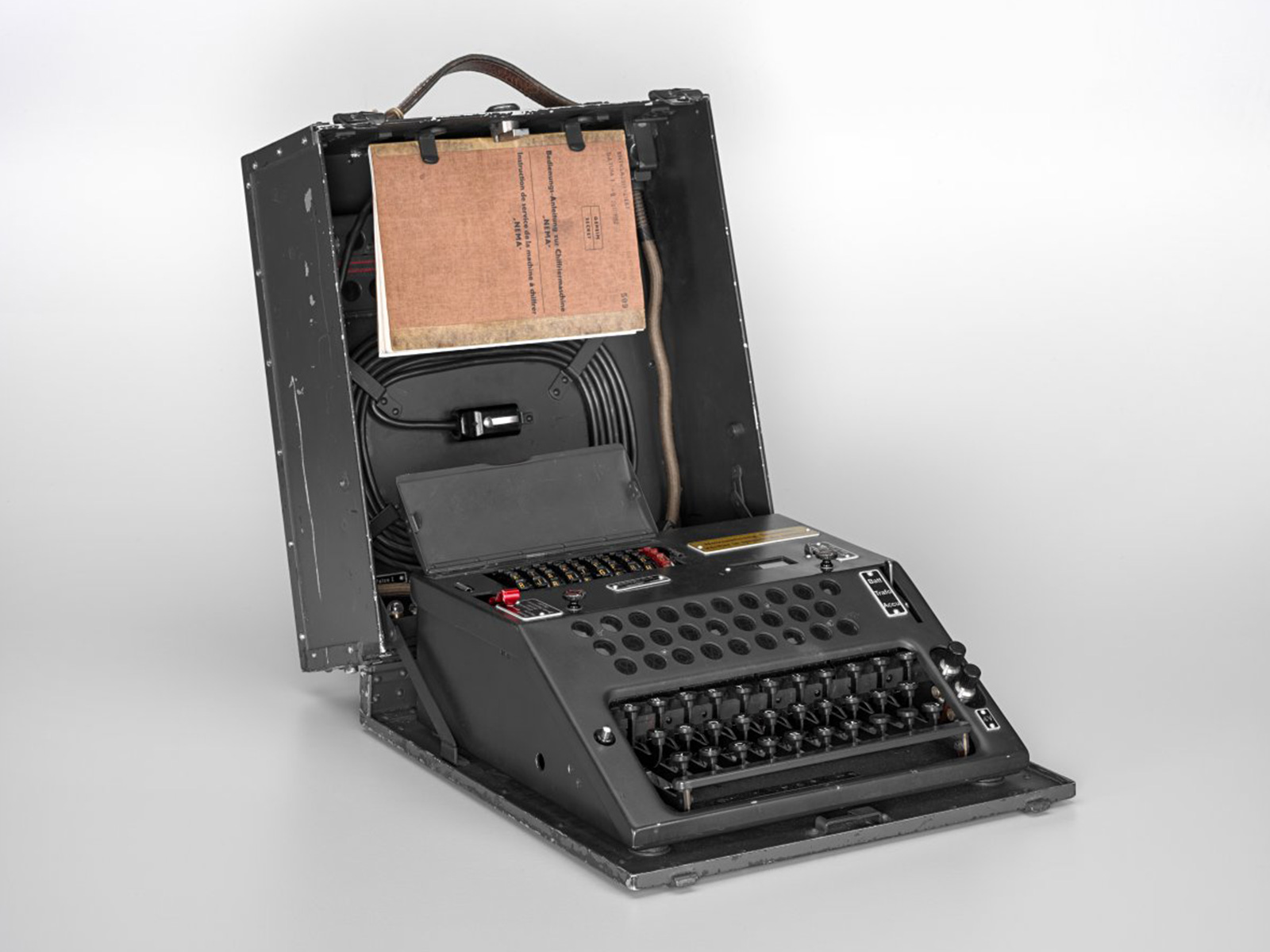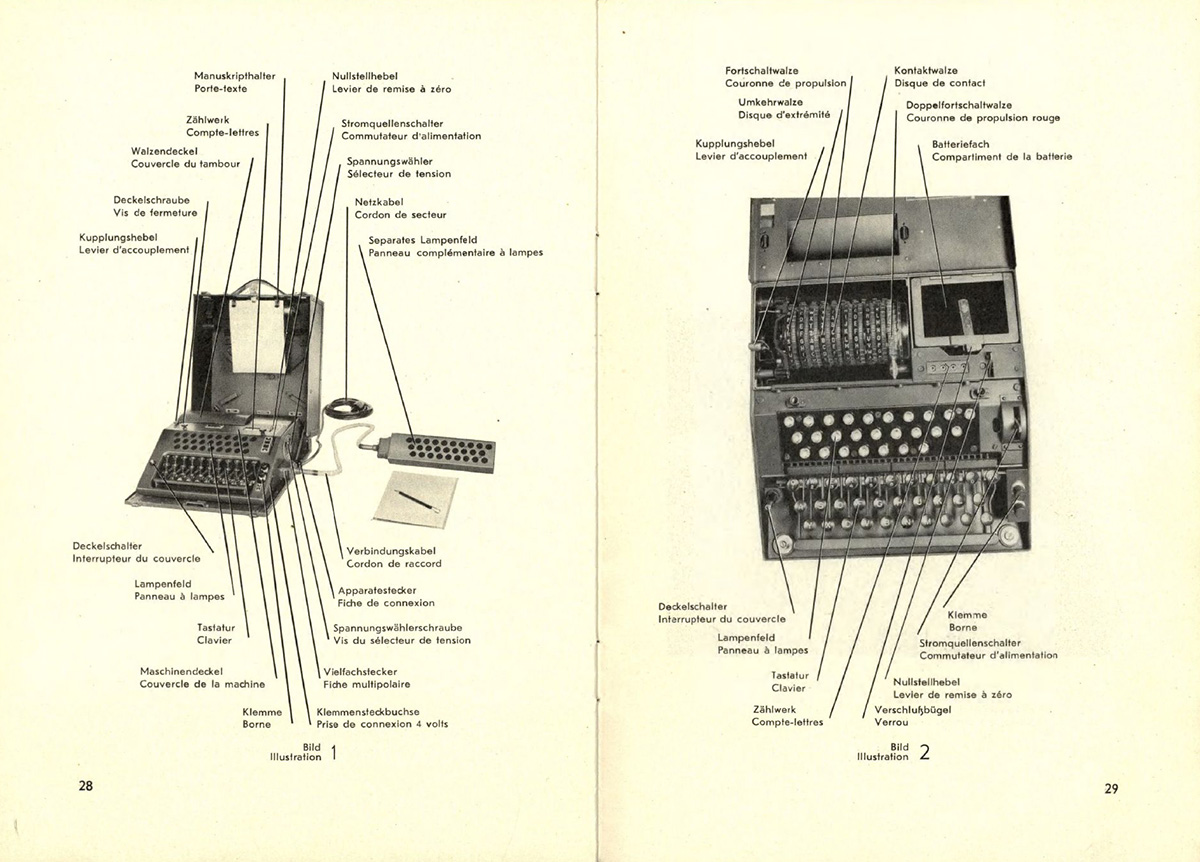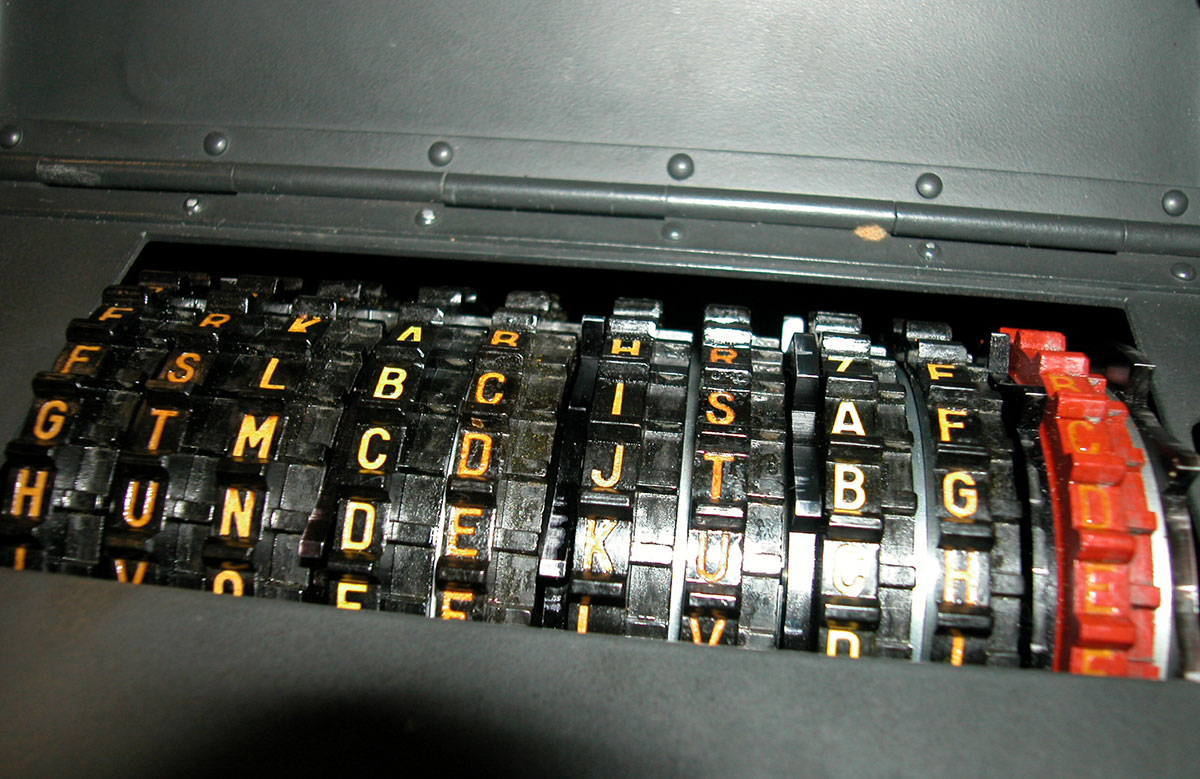Code breakers: how the Swiss came up with their own cipher machine

Before the Second World War, Switzerland had no experience of cryptography. Nonetheless, a group of mathematicians and engineers started work on their own cipher machine in the middle of the war. It was called Nema, an abbreviation of Neue Maschine (‘new machine’).
Nema was made available to the armed forces in 1948 and remained in use until the 1970s. It was only declassified in 1992 and sold for a paltry CHF50 ($56) to anyone who was interested in 1994.
SWI swissinfo.ch regularly publishes articles from the Swiss National Museum’s blogExternal link dedicated to historical topics. The articles are always written in German and usually also in French and English.
To understand how Nema came to be, we need to go back to the start: the Swiss army used the German cipher machine Enigma during the Second World War. Or, to be more precise, a special version of it known as Modell K. The letter K stands for kommerziell (‘commercial’).
This machine came without the plugboard on the front. One of the Swiss experts at the time, the elderly Paul Glur, explained in 2001: “We had neglected the whole subject of encryption after the First World War.” It was only shortly before the war that the Swiss began feverishly working on their own devices, which were state-of-the-art. Switzerland received its first delivery of 238 Enigma machines in 1938. A subsequent order remained unfulfilled.

No sooner had the war started than the intelligence services received reports that the Swiss radio frequencies had been hacked. The reason was unauthorised use of the frequencies. In addition, some of the rotor wiring had not been changed in one part of the devices. That made it easy for Germany to decipher the communications.
At first, the Defense Technology Division wanted to copy Enigma. However, the experts brought in for the project lobbied for a new prototype and this was agreed to. The three experts were Hugo Hadwiger, Heinrich Emil Weber and Paul Glur. Hadwiger was professor of mathematics at the University of Bern and Paul Glur was one of his students. Heinrich Emil Weber was head of the testing department at PTT, the predecessor of Swiss Post and Swisscom.
They were able to identify some, if not all, of Enigma’s weaknesses: the wheel drive was regular, and the device only had three separate wheels as well as one reflector. While this did enable a great many combinations, there were ways of narrowing them down. That proved the key to breaking the code.
Towards a final model
The first prototypes for a successor device were developed during the war, although the definitive model wasn’t completed until early 1945. The final specifications were detailed: “The machine is to be more robust than the prototypes, the keys heavier and more precise, the handles broader and more solid than before,” stated the order placed with Zellweger AG. The original version of the specifications now lies in the Swiss Federal Archives.
The company in Uster had been operating in telecommunications and wireless technology since the 19th century. The first series of machines was completed in 1947 and became operational in 1948. The machines were numbered and packaged in a wooden box for transport with the abbreviation TD (for Tastendrücker-Maschine (‘keystroke machine’)).
In total, 640 devices were made of which there were three types: there was the practice machine, a war machine (K-Mob-Maschine) and a special machine for diplomatic channels. The difference between them lay in the wheel construction. One of the wheels was the reflector. This meant Nema could be used to decrypt as well as encrypt.
However, it also meant that a letter could never be encrypted into the same letter, i.e. A could not be coded as A. That was a glaring weakness of Enigma, which was carried over to Nema as it hadn’t yet been identified as a weakness. It was not until 1977 with the publication of the book The Ultra Secret that the public discovered how England and the Allies cracked the most sophisticated Enigma machine – the Marine Enigma – in the Second World War.

Nema was made only slightly differently from Enigma: it had a keyboard, an internal display with a lamp panel, a set of wheels with four wheel pairs plus an external display to make the machine easier to use. There was also a reflector, making ten wheels in total (including the entry wheel). The increased number of wheels and irregular stepping made Nema considerably more secure than Enigma.
It took two people to use Nema: one to key in the radio message for encryption or decryption and another to read the result on the lamp panel and enter it on a form for communication via Morse code. However, the machine had to be prepared in advance, which involved installing the wheels. The precise position of each reflector was regulated by the ring setting, wheel position and plug connections, known as the Schlüsselbefehl. The radio operator calculated an individual message key for each communication based on the applicable daily settings known as Tagesschlüssel. This was a tiresome, time-consuming and error-prone process. The actual encryption was via the wheel rotations, whereby the letters were scrambled using a complex mechanism.
Decades of use
The machine was considered secure by the standards of the time. It was used by the armed forces until the end of the 1950s, and until 1976 for diplomatic communication. The diplomatic encryption was mainly to conceal economic news and messages relating to Switzerland’s good offices.
There was already a newer and faster technology on the market by the end of the 1950s, which worked with encrypted teletypewriters. The first model was delivered by Regensdorf company Gretag AG in the mid-1950s and taken up by the army as the KFF-58 in 1958. KFF stands for Krypto-Fern-Schreiber (‘crypto-teletypewriter’). This device could be used by just one person touch typing, which was at least ten times faster than Nema. However, it wasn’t suited to diplomatic messaging as too many people were able to read the dispatches in the headquarters. The Nema machines were still used by the armed forces for distress calls. However, they were not particularly popular among the radio operators who called them ‘Fingerbrecher’ (‘finger breakers’) because the keys were rather heavy.
Antique value
Today, Nema is a sought-after collector’s item and sells at anywhere between CHF5,000 and CHF10,000. Engineer Walter Schmid from the Zürcher Oberland is one such collector. He completed stints as a radio operator at the Swiss embassies in Delhi and Dhaka during the 1970s and worked for decades with cryptography, especially Nema, and compiled comprehensive documentation on it. Nema can be found in the collections of many museums in and outside Switzerland and there are simulators on the internet.
The Nema story shows how the Swiss Armed Forces, with their backs to the wall, were able to come up with a machine that did everything asked of it. In making its own device, the military was able to rely on a solid industrial platform with expertise in precision mechanics and telecommunication. Nonetheless, Nema was a one-off and the machine was never offered internationally due to security considerations. And what no-one realised at the time: England and the US had already invented rotor machines before the war that were more secure than Enigma: in England it was the Typex, and in the US the SIGABA.
Author Dominik Landwehr is a cultural and media scientist and lives in Winterthur.

In compliance with the JTI standards
More: SWI swissinfo.ch certified by the Journalism Trust Initiative
You can find an overview of ongoing debates with our journalists here. Please join us!
If you want to start a conversation about a topic raised in this article or want to report factual errors, email us at english@swissinfo.ch.